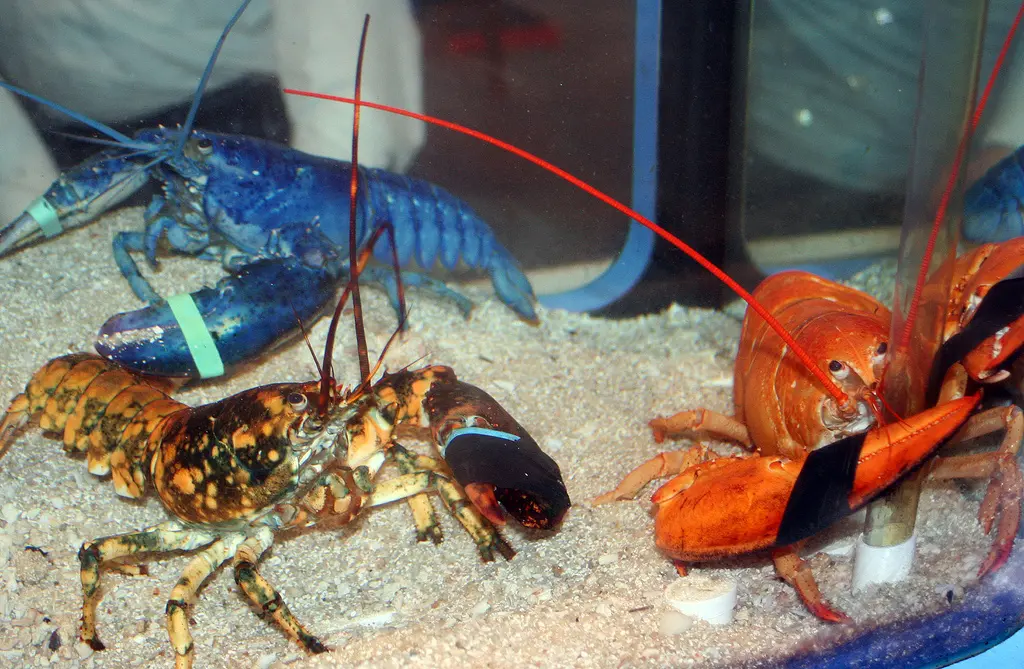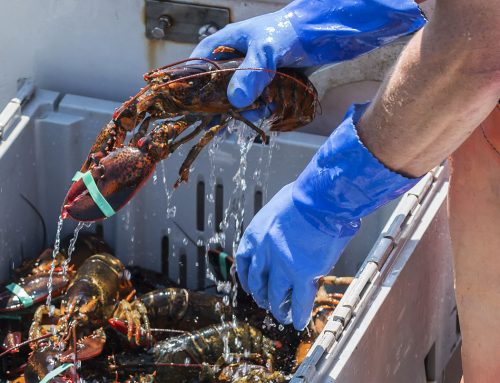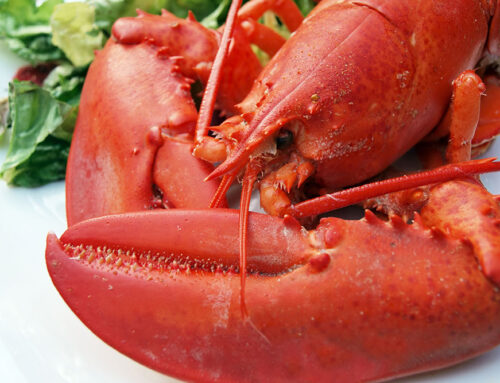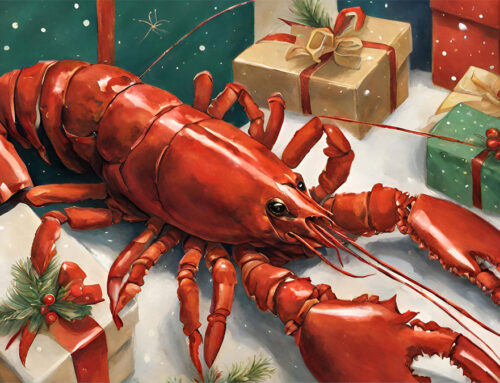“Why isn’t that lobster bright red?’ So many visitors who come to Maine have asked that question when viewing live lobsters in a tank thanks to a century of postcards, children’s books and illustrations that depict Maine’s famous crustacean as bright crimson.
The fact is the natural colors of most live lobsters are a mottled greenish brown to blackish brown, which helps conceal them on the ocean floor from predators. They get their shell color from a class of red and yellow pigments called astaxanthin. Without getting too scientific, when lobsters are cooked, the proteins that astaxanthin bind to are destroyed, changing the shell colors to a red pigment. That’s why so many people think Maine lobster is naturally red.
That said, imagine how surprised a visitor to Maine might be to see a lobster that is electric blue? According to oceanographers, only an estimated one in 2 million lobsters is blue. In 2016, a Massachusetts lobsterman found one in his traps, which caught the attention of ABC News. In this case, a genetic abnormality caused the lobster to produce an excessive amount of a particular protein. Most of these rare lobsters are spared the boiling pot and sent to aquariums, but even if a blue lobster is cooked, its shell changes to red.
Rarer than that, if you can believe it, is a naturally brilliant red colored lobster -again, a genetic abnormality – which occurs in one in 10 million cases.
But hang on, the blue and red showstoppers have nothing on the yellow and calico lobsters (with mottled orange and black shells), which oceanographers estimate are one in 30 million.
Want to up the odds even more? Try finding a “split” colored lobster, that is, a lobster whose coloring is split evenly down its entire body and claws with one half orange and one half brown. The last time one of those was discovered, it was caught by a Maine lobsterman in 2006, who gave it to an oceanarium. The oceanarium said in 35 years, they’ve only seen three split lobsters. The chances of catching one is one in 50 million!
So, that’s got to be it, right? Nope, there’s one more lobster that is rarest of them all – one with no color at all. An albino lobster, of which there are one in 100 million, was just caught by another Maine lobsterman last summer. Albino lobsters are the only ones without pigment, so if it had been cooked, it would have still been white when done.
But true to the conservation methods of Maine lobstermen, this “ghost” albino lobster which was female and had a V notch in her flipper (a previous marking to signal that she’d been already caught once and was carrying eggs) had to be tossed back into the ocean. Let’s hope, because she stands out like a sore thumb to predators, that she still roams free today!









